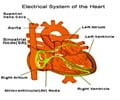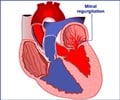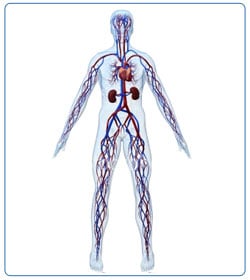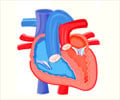Atrial Septal Defect (ASD)
Atrial septal defect is an abnormal hole in the fibrous membrane separating the two smaller, collecting chambers of the heart (atria).
There are no clear reasons for the development of septal defects. Sometimes they can be linked to genetic factors, chromosomal abnormality or environmental factors.
Atrial septal defects can be divided into three major types – secundum, primum and sinus venosus. The secundum type of defect is the most common (80% of all ASD’s) type. Half of these defects close spontaneously on their own.
In an atrial septal defect, oxygenated blood from the left atrium flows to the right atrium and mixes with the poorly oxygenated blood. Babies with ASD may grow to being young adults without having any symptoms. Blood flow to the lungs is increased. A swishing sound or murmur is caused because of this shunt. This is the first hint a doctor may get on a routine examination. However, the murmur can go unheard until the baby is a few months old. ASD may be diagnosed as an infant, child, and teenager or even in adulthood.
Untreated large septal defects can cause severe overload of the right heart over time and can lead to pulmonary hypertension. Other complications can be right heart failure, arrhythmias or stroke. These problems are rare and take many years to develop. In the developed countries, mortality rate of atrial septal defect is very low (<1%).
Foramen ovale is a communication between the two atria in the fetus. If it fails to close after birth, it is called patent foramen ovale (PFO). It can go undetected for ages and should require no treatment at all. Strokes and migraines have been associated with PFO in adults. Numerous trials are underway to research this association.

















